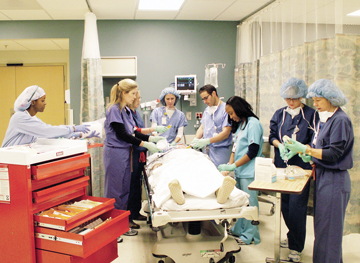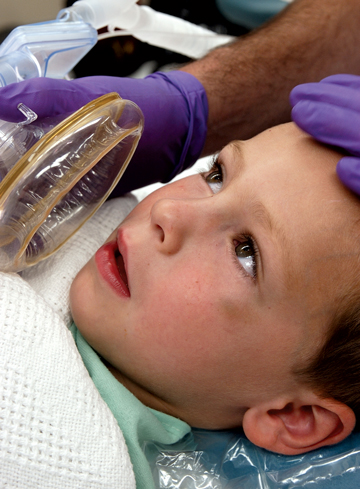MYTH #1: A post-op fever is indicative of MH
FACT: Many clinicians worry that MH may begin in the postoperative period with a fever as the presenting sign, and anesthesia providers are typically taught that MH can occur as late as 48 hours after surgery.
This is incorrect. Postoperative hyperthermia (a temperature > 38 ?C) without additional signs of MH is relatively common and is not typically associated with an eventual diagnosis of MH. Nearly all cases of postoperative MH begin to demonstrate
signs of onset within 10 minutes of discontinuing the triggering agent (volatile anesthesia gas).
MYTH #2: A high fever many hours after administration of succinylcholine is a symptom of MH
FACT: A common call we received on the MHAUS hotline involved scenarios similar to this one: An elderly patient with underlying respiratory disease presents to the emergency room with pneumonia and respiratory
distress. The docs there determine the patient is in respiratory failure and requires tracheal intubation. Etomidate and succinylcholine are administered, intubation is performed and the patient is sent to the intensive care unit to receive
further treatment. Later that night, the patient develops a high fever, sometimes exceeding 40 ?C. The ICU staff believes a patient with a high fever who received succinylcholine could be experiencing MH. Although the administration of
succinylcholine alone is rarely associated with MH, there are no known cases where MH begins to develop many hours later — and manifest solely as a high fever — without additional signs of MH. This patient's uncommonly high fever
is most likely related to their underlying infectious process. We are not aware of any of these cases that ultimately proved to be caused by MH.
MYTH #3: MH does not occur after administration of succinylcholine alone
FACT: Most MH cases are associated with the administration of a volatile anesthetic gas with or without succinylcholine. Many anesthesia providers are under the impression that because the use of succinylcholine
is so common — and MH is so unusual — that the two are not related. Although rare, we are aware of cases of proven MH that occurred after administration of succinylcholine alone. However, unlike Myth #2, the clinical syndrome
usually manifests as marked muscle rigidity (generalized or confined to the masseter muscles), respiratory and metabolic acidosis, rhabdomyolysis and high temperature.
MYTH #4: Patients with a family history of MH are susceptible only if MH occurred in a first-degree relative
FACT: I recently took care of a child whose mother's great uncle had proven MH susceptibility. Some anesthesia providers believe that since no one else in the family between these generations developed MH,
then the child has the same risk of MH as the general population. Although a classic Mendelian inheritance of MH is an oversimplification, MH susceptibility is inherited in an autosomal dominant pattern. This means that having a mutation
in only one copy of the responsible gene (one parent) is enough to confer MH susceptibility. With every generation, the risk of MH susceptibility decreases by 50%. Using a conservatively high prevalence of MH variants of approximately
1 in 1,500 in the general population, it would take approximately 10 generations to decrease the calculated familial risk to be similar to that of the general population. As this example illustrates, any familial history within 10 generations
(essentially everyone) should be cause for suspicion of MH susceptibility. In my patient's case, the causative variant may have started five generations away, which puts the child's risk at about 3%, still much higher than the general
population. Therefore, the child should receive MH precautions, meaning anesthesia with non-triggering agents.
.svg?sfvrsn=be606e78_3)


.svg?sfvrsn=56b2f850_5)